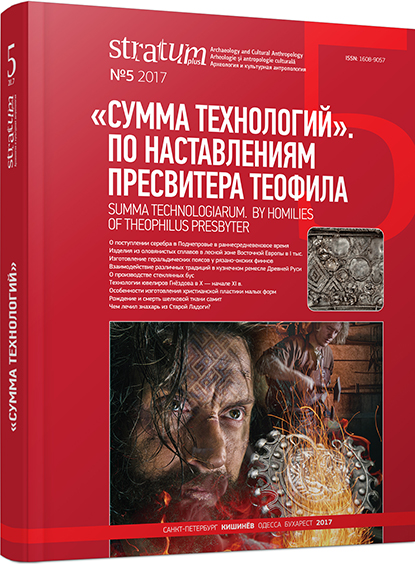Взаимодействие славянских и скандинавских традиций в кузнечном ремесле Древней Руси
Interaction of Slavic and Scandinavian Traditions in the Blacksmith’s Craft of Ancient Russia
Author(s): Vladimir I. ZavyalovSubject(s): History, Archaeology, Middle Ages
Published by: Издательский дом Stratum, Университет «Высшая антропологическая школа»
Keywords: Ancient Rus; smith craft; manufacturing traditions; arhaeometallography; innovation; three-fold technology; welding-on technology
Summary/Abstract: Archaeometallographic analysis of the iron tools fro the early Russian sites enabled the authors to conclude that manufacturing of high-quality articles from black metal in Ancient Rus was based on the technological welding of the iron base and steel blade. The analysis allowed tracing changes in the production technology with time. Thus, it was typical for 10th — 11th centuries to use three-fold technology as the main one, while welding-on was more typical for 12th — 15th centuries. Such technologies reflect different production technologies. One of them, the Scandinavian (three-fold)technology, brought the most remarkable results in the evolving urban craft. Its implementation was explosive, indeed, but had no essential impact on further development of the Early Russian iron processing. The other one — Slavic technology — was distinguished by application of welding-on technology, and was spreading gradually, but turned out to be more sustainable and kept its importance until the beginning of industrial production of ironware. Interaction of these two traditions determined the character of the early Russian model of smith craft.
Journal: Stratum plus. Археология и культурная антропология
- Issue Year: 2017
- Issue No: 5
- Page Range: 133-140
- Page Count: 8
- Language: Russian
- Content File-PDF

